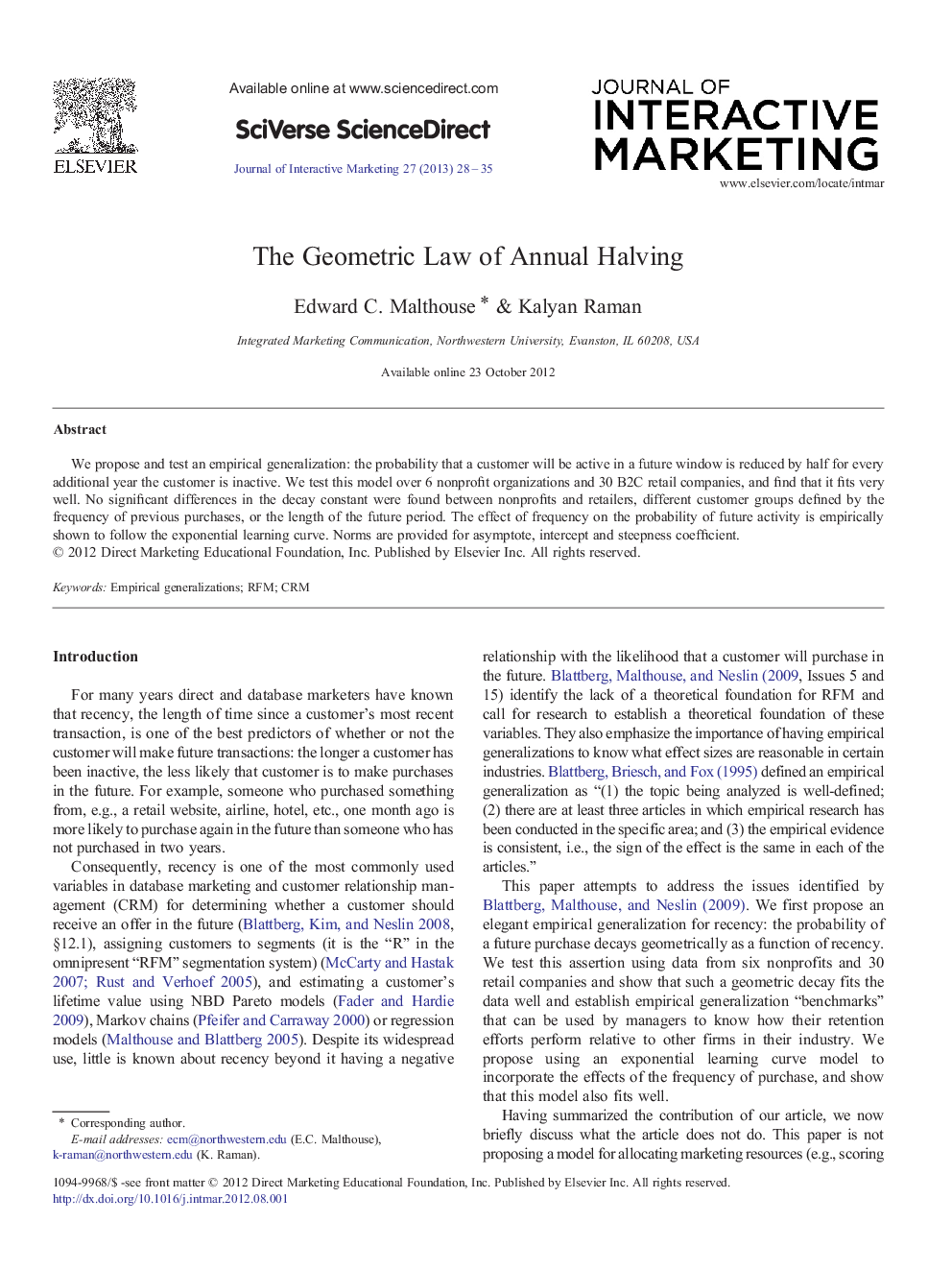| Article ID | Journal | Published Year | Pages | File Type |
|---|---|---|---|---|
| 886055 | Journal of Interactive Marketing | 2013 | 8 Pages |
Abstract
We propose and test an empirical generalization: the probability that a customer will be active in a future window is reduced by half for every additional year the customer is inactive. We test this model over 6 nonprofit organizations and 30 B2C retail companies, and find that it fits very well. No significant differences in the decay constant were found between nonprofits and retailers, different customer groups defined by the frequency of previous purchases, or the length of the future period. The effect of frequency on the probability of future activity is empirically shown to follow the exponential learning curve. Norms are provided for asymptote, intercept and steepness coefficient.
Keywords
Related Topics
Social Sciences and Humanities
Business, Management and Accounting
Marketing
Authors
Edward C. Malthouse, Kalyan Raman,
